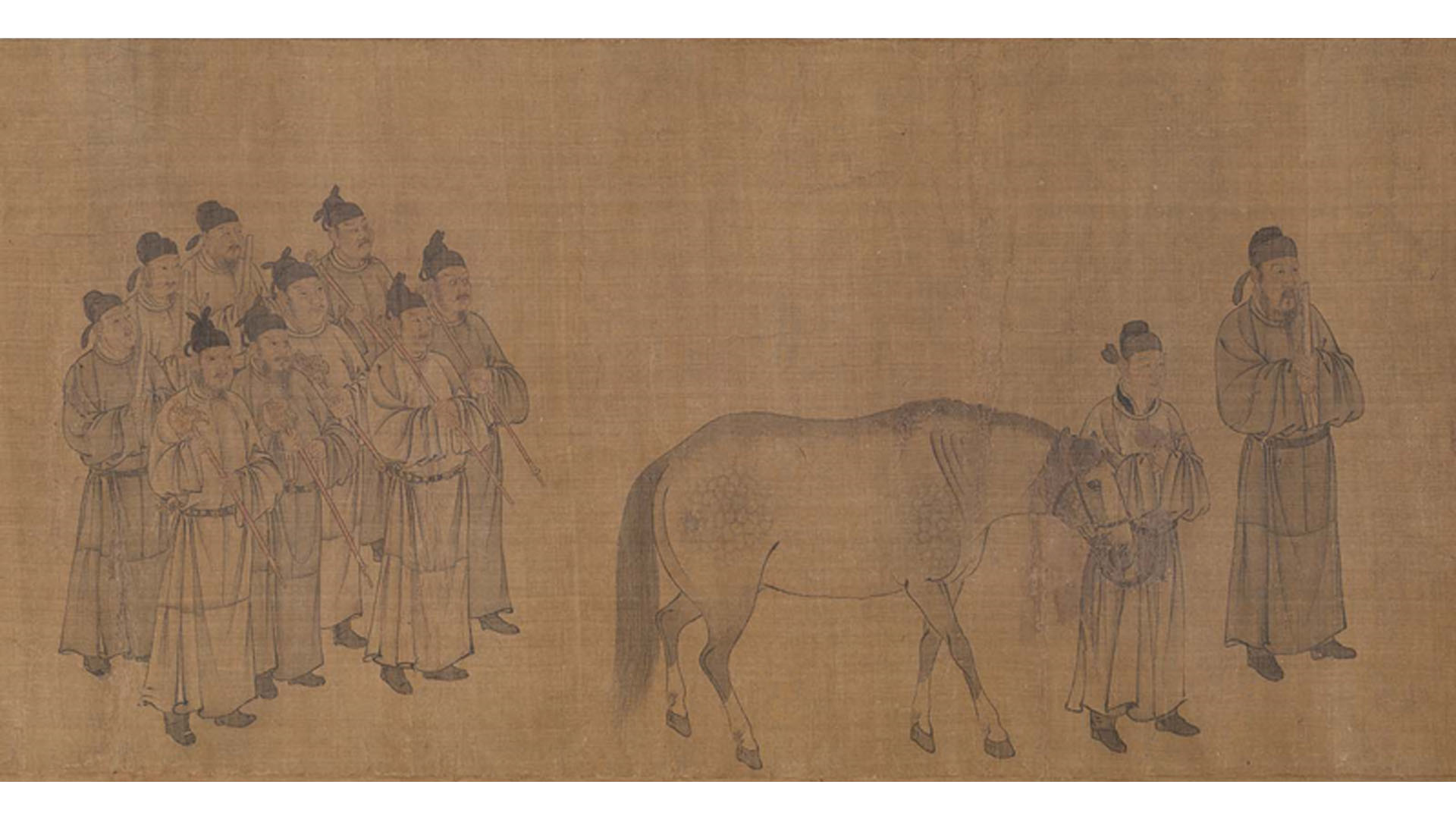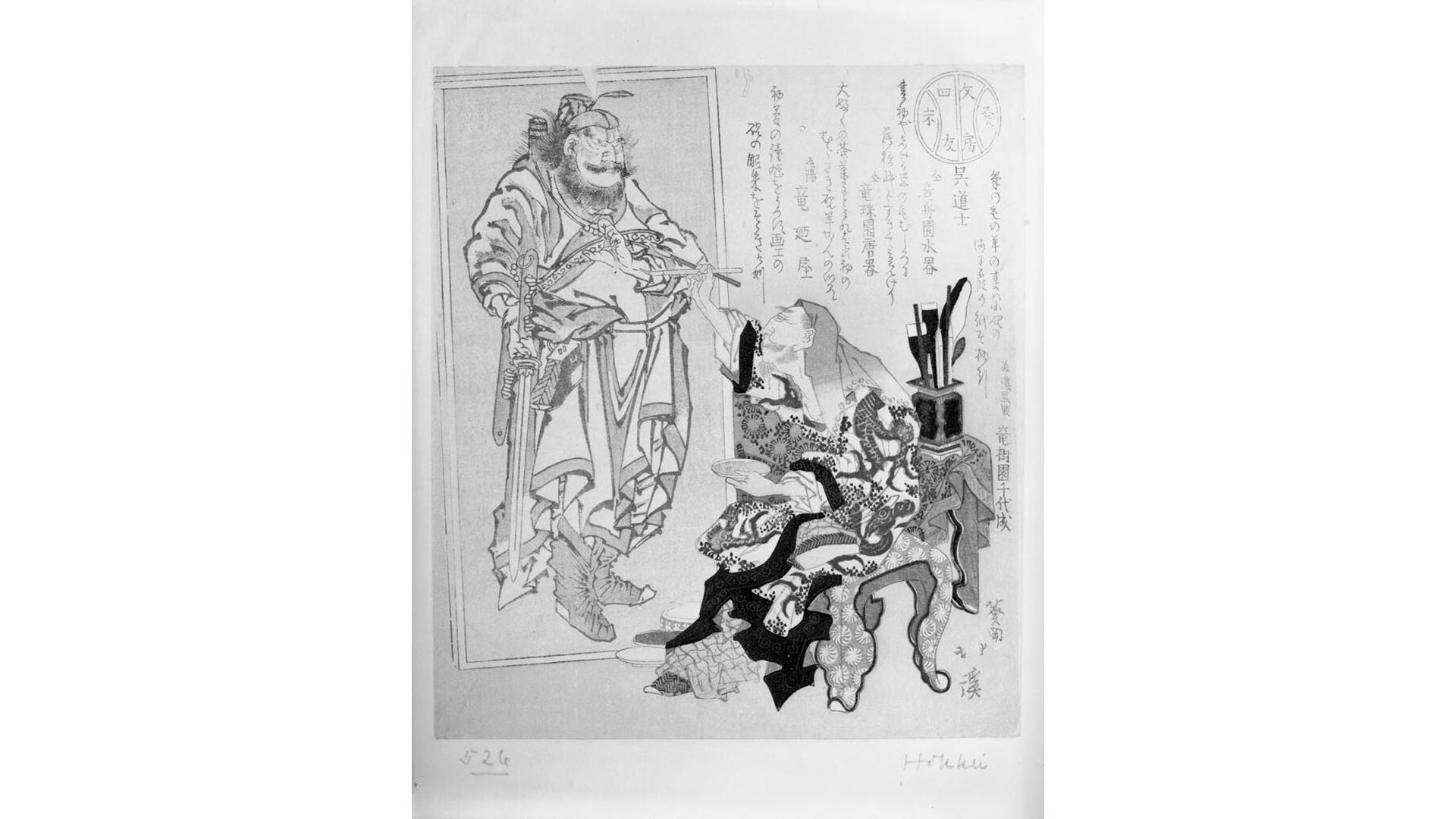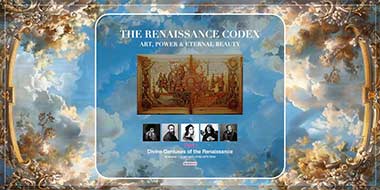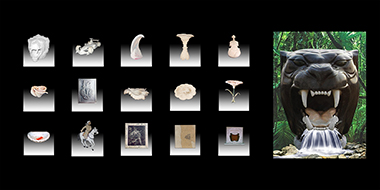WU DAOZI
“Wu Daozi, Tang Dynasty’s “Sage Of Painting”, Revolutionised Chinese Art With His Dynamic Brushwork And Expressive Style, Influencing Generations Of Artists.”
BY MEEKAR - 19 AUGUST 2024
Wu Daozi, often referred to as the "Sage of Painting", is one of the most celebrated and influential painters in Chinese history. He lived during the Tang Dynasty (618–907 CE), a period often regarded as the golden age of Chinese culture. His work set a benchmark for generations of artists that followed.
Wu Daozi’s impact on Chinese art is immeasurable. His innovative techniques, expressive style, and spiritual depth transformed the landscape of Chinese painting, influencing countless artists and shaping the aesthetic ideals of East Asia. Though much of his work has been lost to time, his legacy endures in the stories, techniques, and artistic principles that continue to inspire and guide artists today. Wu Daozi remains a symbol of the profound connection between art, spirituality, and the human experience, embodying the highest ideals of Chinese culture.
Early Life and Background
Wu Daozi was born around 680 AD in what is today known as Henan province. Not much is known about his early life, but it is believed that he began studying painting at a young age. He was a prodigious talent, quickly gaining recognition for his skills. His early works likely included Buddhist and Daoist subjects, as these were common themes in Tang art, and his style was deeply influenced by the religious and philosophical environment of the time.
Wu Daozi's talent soon caught the attention of the imperial court, and he was appointed as a court painter during the Tang Dynasty. His artistic abilities were highly sought after, and he received numerous commissions to create murals and paintings for various temples and palaces. Wu Daozi's work was celebrated for its intricate details, expressive brushstrokes, and ability to convey spiritual and mystical themes. He is remembered as a master artist whose contributions left a lasting impact on Chinese art and culture.
— MeeKar
WU DAOZI
“Wu Daozi, Tang Dynasty’s “Sage Of Painting”, Revolutionised Chinese Art With His Dynamic Brushwork And Expressive Style, Influencing Generations Of Artists.”
Artistic Style And Contributions
Wu Daozi is most renowned for his ability to convey movement and emotion in his paintings. His brushwork was described as swift and lively, with a sense of spontaneity that brought his subjects to life. Unlike many of his contemporaries, who emphasized meticulous detail, Wu Daozi’s style was more expressive and dynamic. He is credited with pioneering the technique known as “flying white” (飞白), where the brush does not fully cover the surface, leaving traces of white space that suggest movement and light.
One of his most famous works is the “Thirteen Emperors Scroll” (列帝图), a series of portraits depicting the emperors of past dynasties. Although the original work has been lost, copies and descriptions of it survive, showcasing Wu Daozi’s skill in capturing both the physical likeness and the character of his subjects.
Wu Daozi was also a master of wall painting, and he was commissioned by the Tang court to create murals in many of the empire’s most important temples and palaces. One of his most famous projects was the mural of the “Vimalakirti Nirdesa Sutra” in the White Horse Temple in Luoyang. The mural was celebrated for its grandeur and the way it conveyed the spiritual essence of the subject matter. It is said that the figures in his paintings were so lifelike that they seemed to move and breathe.
Influence And Legacy
Wu Daozi’s influence on Chinese painting cannot be overstated. His style marked a departure from the meticulous, detailed approach of earlier painters and opened up new possibilities for expression in Chinese art. He was revered not just as a painter but as a sage, with his work embodying the Daoist principles of spontaneity, harmony, and the natural flow of energy (Qi).
Many later artists looked to Wu Daozi as a model, and his techniques were studied and emulated for centuries. His approach to brushwork, in particular, became a foundational element of Chinese painting, influencing the development of both figure painting and landscape painting.
Wu Daozi’s legacy also extends beyond China. His work influenced the art of neighbouring cultures, particularly in Japan and Korea, where the Tang Dynasty’s cultural influence was strong. His style can be seen in the religious and secular art of these regions, where his emphasis on expressive brushwork and dynamic composition became integral to the local artistic traditions.
Myth And Legend
Over time, Wu Daozi’s life and work became the subject of numerous legends, further cementing his status as a cultural icon. One famous story tells of how he once painted a mural of a dragon on the wall of a temple. According to the legend, when he finished the painting, the dragon came to life and flew off the wall, a testament to the extraordinary power of his art.
Another legend speaks of Wu Daozi’s humility. Despite his immense talent and fame, he was known for his modesty and often credited his success to the guidance of his spiritual beliefs rather than his own abilities. This aspect of his character made him a revered figure not just as an artist but as a moral and spiritual exemplar.























































































